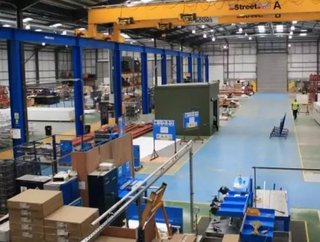IT Trends Dictate Employee Satisfaction

We’ve probably all been known to yell at the screen or bash the keys when faced with a malfunctioning computer, but IT frustration can have a more serious impact on employee health – and the health of your business’s bottom line.
Recent research commissioned by NG Bailey shows that failing IT set-ups are causing hundreds of hours to be lost each year to downtime and delays. Workers say they could save an average of 4.3 hours a week with the perfect IT set-up in place. Over the course of a year, that equates to 27 days in lost productivity, more than a working month! Imagine what your business could do if it were able to claw back that wasted time.
The study also finds that almost half of those whose productivity has been held back have suffered from stress as a result, with workers having to work longer hours to make up for IT failures and missing deadlines.
The frustration is so great that nearly half of workers say they’d give up the work Christmas party, and an incredible seven percent of 18-34 year old employees say they would even give up part of their salary
All of this sends a clarion call to IT decision makers within the manufacturing industry: good IT is worth the investment. And with an abundance of new technologies driving innovation and driving down costs, there’s never been a better time to review your business’s IT.
The NG Bailey research shows that it’s all about the basics – IT infrastructure is key when it comes to productivity. Hardware (72 percent), software (71 percent) and networking (70 percent) are the three areas that employees view as the most important to get right in order to have a positive impact on productivity.
However, the research also shows that an overwhelming 91 percent of employees say they’re keen to try new technologies at work if this will make them more productive. Unfortunately they don’t always see this desire for innovation reflected by their employers with fewer than half of workers viewing their employer as innovative when it comes to their workplace’s IT.
There’s a huge opportunity here for forward-thinking manufacturing businesses, workers are crying out for innovative solutions to help them do their job more effectively. Luckily the current technology landscape can cater to these needs.
Renewed business growth is now enabling many companies to review their current infrastructure, and virtualisation and cloud are high on the agenda as these technologies come of age.
Cost savings, simplified deployment, increased speed and agility, improved back-up and disaster recovery are high on the list of motivations to move to a virtualised environment. It also frees up IT staff, allowing them to be proactive and focus their attention on innovating for competitive advantage instead of just maintenance and provisioning.
Sophisticated hardware, software and network solutions should complement each other and work harmoniously to create an efficient IT architecture. If the basic IT infrastructure isn’t operating efficiently, sophisticated technologies will just add to the headache and complicate things further.
Once the basics are in place, you then have the freedom to build on it with complementary solutions. Bring-your-own-device (BYOD) policies are on the rise, and play a key role in boosting not only your workforce’s productivity but also satisfaction levels.
The NG Bailey research shows that more than half of employees who are able to bring their own devices to work believe this has a positive impact on their productivity. Nearly a third of BYOD users say they are very satisfied with their work environment, compared to just 13 percent of those in businesses without a BYOD policy.
You can leverage this to your business’s advantage, but first, you need to be sure that the correct processes and best practices are in place before implementing a BYOD policy, considering the security implications.
Gartner predicts that, by 2017, twice as many employee-owned devices will be compromised by malware than those that are owned and managed by enterprises. Mobile devices are also much more likely to be misplaced, so it’s essential to have a robust BYOD policy that takes into account remote management, including data wiping, and back-up.
But, if done well, it’s clear that BYOD can really enhance the working environment, increase staff satisfaction and improve productivity. Moreover, there has also been an increasing trend towards flexible working hours and remote working. The NG Bailey research shows that four out of five employees say flexible working hours, including the ability to work from home, would have a positive impact on their productivity.
BYOD policies, VPN connections, cloud applications and unified communications solutions make it easier for staff to access their information from anywhere, and ensure that working from home, or wherever, is seamless, allowing for real-time collaboration wherever your team are, increasing not just productivity but creativity.
By investing in new technologies, manufacturing companies can be more agile and flexible, increasing productivity and giving themselves a competitive edge. As the manufacturing industry enjoys positive momentum, the time is right to make that change.
- Crowe UK: 2024 Manufacturing Outlook Report Explores GrowthProduction & Operations
- Top 10: Chief Manufacturing OfficersProduction & Operations
- Aerospace Insight: Where does Boeing make all of its PlanesProduction & Operations
- Comau's Automation Solutions for Outside of ManufacturingAI & Automation






